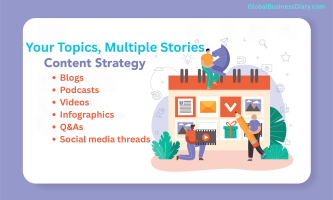The Rise Of Interactive Email Strategies In Modern Brand Campaigns

How many times have you stared at your inbox, quickly skimming through subject lines, hoping something would jump out and grab your attention? It’s a universal feeling, right? Today’s brands are battling it out for that coveted spot of “must-read” amidst a sea of ignored messages. And guess what? Modern brands are rapidly incorporating interactive features in their campaigns to boost user engagement. In fact, some of the most captivating examples out there give us a clear picture of where the future of email marketing is heading.
You might wonder, “Why all this fuss about interactive emails?” Well, there’s a certain kind of magic that happens when you engage with your audience in a way that’s more than just asking them to buy something. It’s like starting a conversation instead of giving a monologue.
Why The Shift Towards Interactivity?
Interactive content is a game-changer. It’s not just about reading; it’s about experiencing. Polls, quizzes, and even mini-games inside emails can transform the way users perceive a brand. They’re not just subscribers; they’re participants. And participation fosters loyalty.
Yet, despite all these benefits, only a surprising 23% of content marketers considered investing in interactive content last year, according to Semrush. It’s curious, isn’t it? Why the hesitation? Could it be the perceived complexity or maybe doubts about ROI? Whatever the reasons, they’re missing out.
Content Marketing In The Post-Covid Era
Speaking of trends, did you know that the COVID-19 pandemic significantly shifted the content marketing landscape? Everything turned on its head as businesses across the globe tried to navigate this unprecedented situation. But here’s an intriguing piece of info: content marketing, which was always the underdog, suddenly took the lead.
It’s also worth noting, as per a report by the CMI and MarketingProfs, that 28% of both medium-sized and large-sized B2B companies redirected their paid advertising budget to content marketing last year. Check the details here. It makes sense, doesn’t it? With more people at home, online content consumption skyrocketed. Brands recognized this shift and adjusted accordingly.
Real-Life Instances Of Engaging Content
Now, let’s get real. Imagine this: you receive an email from your favorite travel agency. Instead of the usual scenic photos and offers, there’s a short interactive quiz titled “Discover Your Next Dream Destination.” By answering a few fun questions, the email directs you to a personalized travel package. Wouldn’t you be intrigued? That’s the potential of interactivity.
Similarly, a fashion brand might include a mix-and-match game in their emails, allowing subscribers to create their outfits. By doing so, the brand isn’t just selling products; it’s offering an experience.
The Bigger Picture
In this fast-paced digital age, where distractions are many and attention spans are short, interactive emails can be the bridge that connects brands with their audience on a personal level. By fostering engagement, brands aren’t merely seen; they’re remembered.
But remember, like all trends, interactive emails should be approached thoughtfully. It’s not about using every new feature available but choosing the ones that align with your brand’s message and resonate with your audience. After all, in the world of marketing, authentic connections always triumph over fleeting gimmicks.
Strategies To Boost Interactivity
As we delve deeper into the realm of interactive emails, it becomes essential to explore some proven strategies that can truly set your campaigns apart. After all, knowing the “why” behind interactivity is only half the battle; the “how” is equally significant.
1. Personalization Is Key
No one likes generic emails. Personalizing your email content can make subscribers feel valued. Think about it. Isn’t it delightful when an email newsletter addresses you by your name or suggests products based on your browsing history? The added touch of familiarity not only grabs attention but also increases the likelihood of engagement.
2. Gamify Your Emails
Incorporate mini-games or challenges that pique the subscriber’s interest. Brands could use trivia quizzes, spin-the-wheel games, or even jigsaw puzzles relevant to the content. Gamification can effectively drive engagement and offer a fresh, fun perspective to mundane emails.
3. Incorporate Real-Time Interactions
Real-time elements like countdown timers for sales or live product availability counters can create a sense of urgency and nudge subscribers to take immediate action. These dynamic components can make your emails stand out and feel incredibly current.
4. Use Interactive Surveys And Polls
What could be more human than directly communicating with your audience to comprehend their needs and preferences? Infuse your strategy with short surveys or quizzes to collect feedback, views, or even data for market understanding. The reflections received can provide priceless understanding for upcoming campaigns.
5. Embed Videos With Playable Ctas
Instead of redirecting subscribers to another platform, embed videos directly into your emails. Enhance them with clickable CTAs, ensuring that the subscribers can interact or shop without ever leaving the email.
6. Emphasizing Mobile-First Design
In fact, a recent study from Statista highlighted that mobile devices accounted for a staggering 58.33% of global website traffic in the early parts of 2023. It’s a figure that has been consistently around the 50% mark since 2017 and took a permanent leap beyond it in 2020.
Now, imagine the number of people reading emails on their phones! Hence, if you’re thinking of dazzling your audience with interactive email elements, ensuring they shine on mobile is not just advisable; it’s essential. Because even the most splendid desktop email design can lose its charm on a mobile screen if not optimized correctly.
Looking Ahead: The Future Of Interactive Emails
So, what kind of future should we anticipate? The current trends suggest that as tech advances, what we can achieve within a simple email will continue to push the limits. The road ahead may reveal experiences in augmented reality, a heightened level of personalization through deeper AI integration, or even the chance to virtually try on items from our favorite online stores. It promises a world where our common human experiences are enhanced by the seamless fusion of reality and digital innovation.
However, at the heart of it all, the essence remains unchanged: building genuine connections. No matter how advanced or interactive emails become, they must resonate with the human at the other end. Interactivity isn’t about mere clicks or swipes; it’s about evoking emotions, sparking interest, and fostering genuine brand loyalty.
In wrapping up this exploration of interactive email trends, one thought stands out: Interactivity is more than a trend. It’s an evolution. Brands that dare to evolve, engage, and excite are the ones that will remain etched in the minds of their audience. How will your brand leverage this powerful tool?
Additional:














